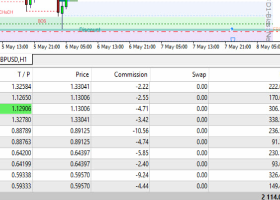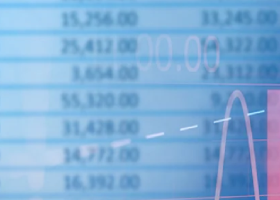
British Pound Receives a Welcome Bump Against US Dollar, Euro from Higher-than-Expected Economic Growth Data
A mixed bag of data for the UK has given sterling a boost, but also highlighted growing imbalances in the economy.
This morning saw the release of a welter of data, the most significant of which was the final estimate for UK Q4 GDP.
The data showed a marginal increase over the forecasted amount, after growth was recorded at 0.6% in Q4 compared to the 0.5% predicted.
On an annualised basis the same thing was observed, with GDP rising 2.1%, when expectations had been lower, at only 1.9%.
As a result, the whole of 2015’s growth was revised up to 2.3% from 2.2% previously – however this was still below the 2.8% recorded in 2014.
Fears of an economic slow-down in the UK may have pitched forecasts too low.
Despite some analysts dismissing UK GDP data as likely to prove “unenlightening”, the surprising upward revisions of the final estimate produced a 40 point rally in GBP/USD, which rose from the 1.4340s to the 1.4380s in the hour that followed.
EUR/GBP, meanwhile, fell 10 points to 0.7890 following the release, and GBP/AUD appreciated 15 points to 1.8760 in the five minutes following the publication of GDP data.
“This revision upwards for both the quarterly and yearly figure will add as welcome relief economically/politically as the Conservatives are under significant strain, with polls suggest the Brexit debate is becoming perhaps more evenly balanced than first expected.” Commented Alx Lydall, Senior Sales Trader at FX provider Phoenix Partners.
Macro-Economic Data Website Trading Economics commented in more detail on the figures:
“Consumer demand remained the main driver of growth and the negative impact from trade came lower than expected while the drag from business investment was larger.”
Household Expenditure made the largest contribution to growth, rising 0.6%, with Government Spending coming in second and showing a 0.3% rise qoq.
Sectors which were a drag, included Gross Fixed Capital formation which declined 1.1 percent (-0.1 percent in the second estimate), of which business investment slumped 2 percent.
The World Bank defines Gross Fixed Capital Formation as including, “land improvements (fences, ditches, drains, and so on); plant, machinery, and equipment purchases; and the construction of roads, railways, and the like, including schools, offices, hospitals, private residential dwellings, and commercial and industrial buildings. According to the 1993 SNA, net acquisitions of valuables are also considered capital formation.”
Copy signals, Trade and Earn $ on Forex4you - https://www.share4you.com/en/?affid=0fd9105
Current Account Falls to Lowest Level Since Records Began (1955).
UK Current Account data for the fourth quarter was released at the same time as the GDP growth figures.
The Current Account for the UK is just the same as the Current Account for an individual - it measures outgoings versus income. The result is the difference between the two in that quarterly period.
A deficit means the economy is spending more on foreign goods than it is making from exporting its own goods. A surplus the opposite.
Generally, a deficit is bad for the currency as it is a sign the currency is being sold to buy foreign imports more than it is being bought to buy exports
The UK has historically had a wide deficit as it tends to import more than it exports.
The 2015 Q4 figures showed that this deficit widened yet further, in fact, that it widened to a record wide level not seen since records began in 1955.
“The UK's current account deficit increased to £32.7 billion in the fourth quarter of 2015, up from an upwardly revised deficit of £20.1 billion in the previous period.
The gap was equivalent to 7 percent of GDP at current market prices, up from 4.3 percent in Q3 and hitting its largest proportion since quarterly records began in 1955,” reports TradingEconomics.com.
The Two Releases Reflect Imbalances in the Economy
Taken together the two releases seem contradictory - how could there be an increase in growth if trade declined?
The explanation is provided by Scott Bowman of Capital Economics, who argues that the divergence between the two releases is indicative of a widening imbalance in the UK economy.
Bowman says growth is almost solely being driven by consumer spending, citing the extremely low savings ratio of 3.8% as indicative of rampant spending by consumers:
“In a further sign of imbalances in the economy, the household saving ratio fell to a record low of 3.8% of disposable income in Q4.”
The fall in the current account he argues is due mainly to the large drop in foreign investment:
“The negative trade contribution, as well as a massive widening in the investment income deficit, resulted in the largest current account deficit on record of 7.0% of GDP in Q4, up from 4.3% in Q3.”
Whilst this reduced GDP, it did not flatten it:
“In contrast to strong domestic demand, net trade is estimated to have subtracted 0.3pps from GDP growth.”
Bowman notes too that Housing, for example, which saw 2.8% increase in Q4, has probably not fared so well in Q1, according to falling Mortgage Approval figures in Jan and Feb.
He concludes that Q1 data in 2016 is likely to come in lower than 2015 as constraints increase:
“With activity indicators suggesting growth hasn’t improved at the start of this year and with Brexit uncertainty and a renewed fiscal squeeze weighing on demand, growth in 2016 looks likely to come in at or below 2015’s rate. “
Longer-term, however, he sees growth picking up:
“We are optimistic that a strong pick-up in productivity should allow a stronger recovery beyond 2016, when some of these demand constraints ease.”


